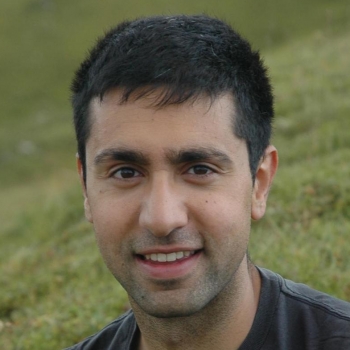Amir Safavi-Naeini
23 - 28 June 2024
Stanford University
Stanford, California USA
Events
Amir Safavi-Naeini
Stanford University

Quantum Nonlinear Integrated Photonics
In this tutorial I'll provide an overview of nonlinear photonics with integrated devices and talk about how we design them. I'll begin with some quantum optics background, covering key concepts like single photons, photon pair generation, and squeezed states of light that provide the foundation for quantum nonlinear optics. I'll then discuss how these phenomena can be realized in chip-scale integrated photonic devices, highlighting the benefits of the integrated platform such as scalability, performance, and reproducibility. Next I'll dive into the key device design considerations, examining important parameters like nonlinearity, loss, and dispersion that dictate device performance. I'll explain the critical role of dispersion engineering and quasi-phase matching between interacting optical fields. I'll then describe the dynamics of quantum nonlinear interactions in the above-threshold regime. Finally, as a case study I'll focus on the design and operation of an integrated frequency-modulated optical parametric oscillator (FM-OPO) [1]. I'll show how careful dispersion and cavity engineering allow this device to generate ultra-broadband frequency combs in the near and mid-infrared with a performance rivaling that of conventional OPOs. I'll highlight the quantum properties of the FM-OPO's output, including quadrature squeezing and spectral correlations. I'll conclude with an outlook on the future potential of FM-OPOs, its close relation to the FM Laser as analyzed in Ch 27 of [2] for applications ranging from quantum information processing to spectroscopy and sensing.
[1] Stokowski, Hubert S., et al. "Integrated frequency-modulated optical parametric oscillator." Nature 627.8002 (2024): 95-100.
[2] Siegman, Anthony E. Lasers. University science books, 1986
About the Speaker
Amir Safavi-Naeini received a B.A.Sc. in Electrical Engineering at the University of Waterloo in Canada (2008) and a Ph.D. in Applied Physics at the California Institute of Technology in 2013. After a post-doc at ETH Zürich, he joined the faculty at Stanford in September 2014. Amir Safavi-Naeini has been awarded the Terman (2015, 2018), Hellman (2016), Packard (2017) and Sloan research (2020) fellowships, DARPA Young Faculty Award and Director's Fellowship (2019), and the Moore Inventor Fellowship (2022). He is an Associate Professor of Applied Physics and Electrical Engineering (by courtesy) at Stanford University. He is known for his pioneering works in the fields of quantum cavity optomechanics, coupling light and sound on a chip, as well as for path breaking contributions to nano-electromechanical systems including superconducting qubits, and novel approaches in nonlinear optics in integrated photonic circuits. His lab (https://linqs.stanford.edu/research) is pushing forward the boundaries of what can be done in the field of hybrid quantum systems, coupling systems of different physical nature to each other and controlling them in the quantum regime. To address the challenges of quantum sensing, quantum communication, and quantum information processing, his group is developing photonic, phononic, and microwave devices.
